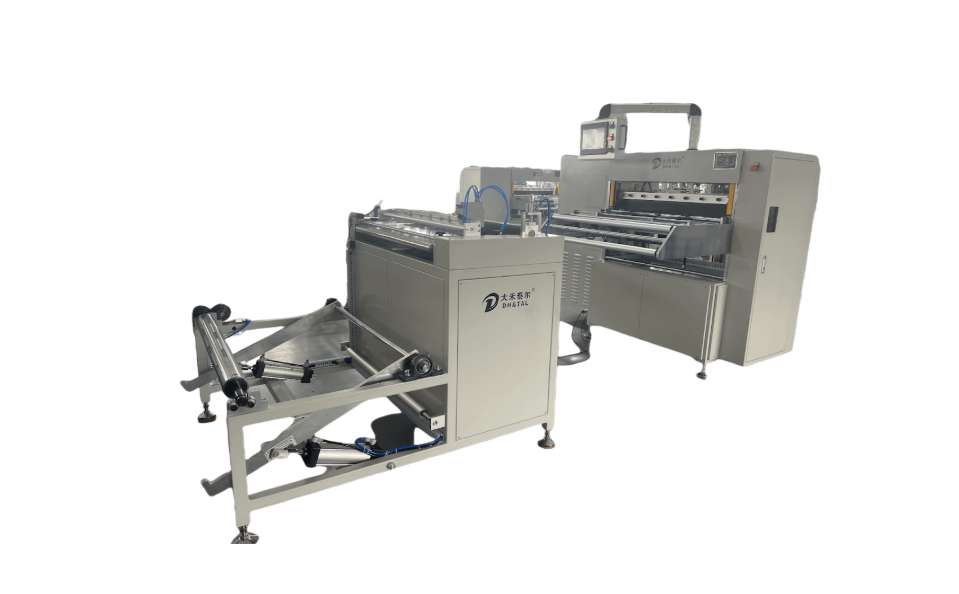How to Select a Paper Pleating Machine for Microfiber Filter Media?

Choosing the right paper pleating machine is critical for manufacturers using microfiber filter media. Whether you’re producing HVAC filters, automotive cabin filters, or industrial air purification filters, a reliable air filter paper pleat machine ensures consistent pleat geometry, high production output, and minimal downtime. From material compatibility and pleat design to automation capabilities and return on investment (ROI), we’ll help you confidently select the best paper pleat solution for microfiber filter media production.
Paper Pleat Machine Material Compatibility with Microfiber Media
When evaluating paper pleats for microfiber filter media, the first critical factor is material compatibility. Microfiber media typically combines ultrafine fibers with a reinforced backing to achieve high filtration efficiency without excessive pressure drop. These delicate substrates require gentle handling and a precise pleating mechanism.
Premium air filter paper pleating machines feature adjustable pleat rollers and customizable pads to accommodate various media thicknesses, typically ranging from 0.3 mm to 1.2 mm. When switching between polyester-based microfibers and glass fiber blends, you need to be able to fine-tune roller pressure and pleat depth. Select a machine with silicone-coated or polyurethane rollers that firmly grip the media without scratching or crushing the fibers. Also, check the pleating machine’s paper feed path: a straight, low-tension feed path reduces the risk of micro-tears and irregular pleat spacing.
Paper pleating machine pleat geometry and precision control
Pleat geometry directly affects filtration efficiency, dust holding capacity, and pressure drop. Top-of-the-line paper pleating machines offer precise control over pleat height, spacing, and angle, enabling you to tailor pleat shapes to specific grades of microfiber. For example, HEPA filters typically utilize deeper, more closely spaced pleats to maximize surface area, whereas coarse pre-filters employ shallower, wider pleats to minimize airflow resistance.
Modern air filter paper pleating machines utilize digital servos and programmable logic controllers (PLCs) to maintain pleat uniformity within ±0.2 mm, which is crucial for producing multi-pleated filter packs containing dozens of pleats. During product batch changeovers, you can store pleat parameter recipes” in the controller, which can significantly reduce setup time and scrap rates. Additionally, some advanced machines feature in-line vision inspection systems that measure pleat consistency in real-time and trigger alarms when tolerances are exceeded.
See also: The Influence of Tech on Modern Communication
Output and Production Speed
In high-volume microfiber filter production, output is a key driver of profitability. The maximum pleating speed of a paper pleating machine determines how quickly you can complete large orders. Entry-level pleating machines typically operate at 5-10 m/min, which is suitable for producing small batches or specialty filters. However, leading air filter paper pleating machines have speeds of over 20 meters per minute, allowing manufacturers to meet just-in-time production demands without bottlenecks. When evaluating output, both speed and changeover efficiency should be taken into account. Machines equipped with quick pleat change or automatic pleat pitch adjustment minimize downtime between runs. Additionally, continuous-feed pleating machines eliminate the need for manual repositioning of the media, thereby further improving net run rates.
Automation and Ease of Integration
Automation features greatly influence how seamlessly a paper pleating machine integrates into the production line. Basic models may require manual setting of pleat width and media tension, while high-end systems offer fully automatic adjustments, recipe call-ups, and remote monitoring. For modern manufacturing plants embracing Industry 4.0 concepts, air filter paper pleating machines with Ethernet/IP or Profinet connectivity enable real-time data exchange with upstream and downstream equipment.
Look for HMI screens that guide operators through setup steps, display real-time production metrics and flag maintenance alerts. Advanced machines can log performance data to a centralized system, promoting continuous improvement. In addition, machine vision systems can verify pleat alignment and surface defects before media moves to the following process, eliminating waste and ensuring quality.
Maintenance Requirements and Reliability
In high-volume microfiber filter production, reliable uptime is critical. Therefore, maintenance should be a high priority when selecting a paper pleating machine. Evaluate the machine’s ease-of-use design, which features easily removable covers, modular pleat assemblies, and slide-out roller modules, simplifying cleaning, lubrication, and parts replacement. For example, a tool-free roller replacement mechanism can reduce maintenance time by up to 50%.
Review the manufacturer’s recommended maintenance intervals and evaluate worn parts for easy re-grease. Air filter paper pleating machines with self-lubricating bearings and sealed gearboxes reduce the frequency of manual lubrication. Additionally, the built-in diagnostic software monitors motor current, drum temperature, and vibration levels to predict component fatigue before it occurs.
Make the Right Choice for Your Microfiber Filter Production
Choosing a paper pleating machine for microfiber filter media is more than just comparing prices. You must evaluate material compatibility, pleating accuracy, production speed, automation capabilities, maintenance needs, facility fit, and financial feasibility. By systematically evaluating each factor and working with a reputable supplier, you’ll equip your production line with a pleating solution that delivers consistent quality, maximizes output, and minimizes downtime.





